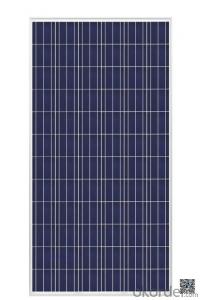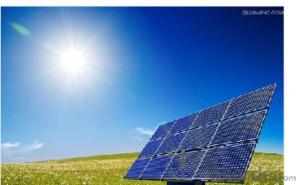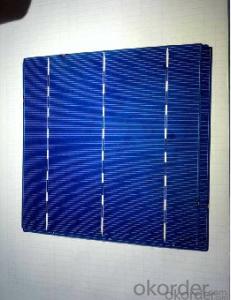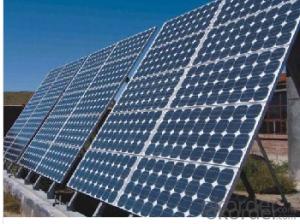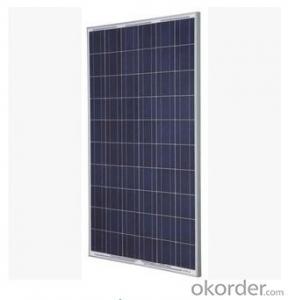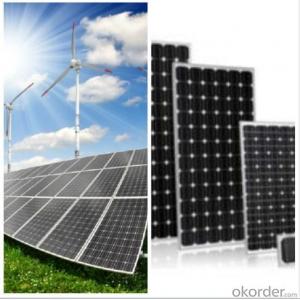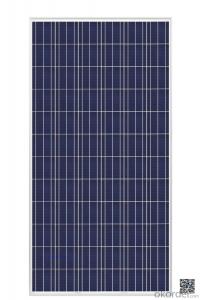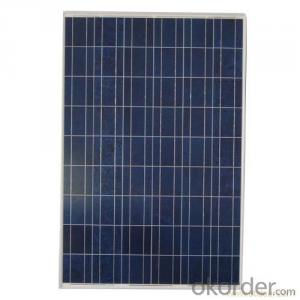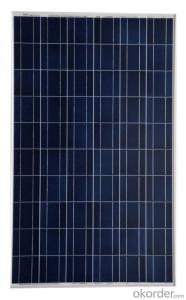Solar Panels Savannah Ga - 250W Best Price, Solar Modules Savannah Ga - 250W for Quality
- Loading Port:
- Shanghai
- Payment Terms:
- TT OR LC
- Min Order Qty:
- 2500 watt
- Supply Capability:
- 250000000 watt/month
OKorder Service Pledge
OKorder Financial Service
You Might Also Like
Specification
Product Description:
Product Description:
1.Structure of
Polycrystalline Silicon Solar Panel for 250W
I. High efficiency crystalline silicon solar cell. Even if under the weak light, the solar module can produce maximum power output.
II. Tempered glass (toughened glass): Anti-reflecting coating and high transmission rate glass increase the power output and mechanical strength of solar module.
III. EVA and TPT: Using high quality EVA and TPT to prevent destroying and water.
IV. AI frame: Without screw, rner connection. 6 holes on the frame can be installed easily.
V. Junction box: Multi function junction box with water proof.
VI. Long lifetime: ≥25 years; Less power decrease.
2.Solar Module Specification
Warranties:
10 years limited product warranty
15 years at 90% of the minimal rated power output
25 years at 80% of the minimal rated power output
Specificate sheet:
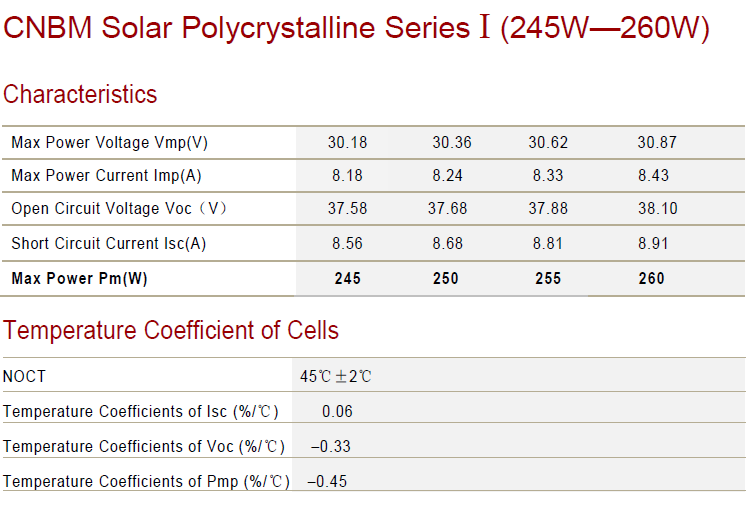
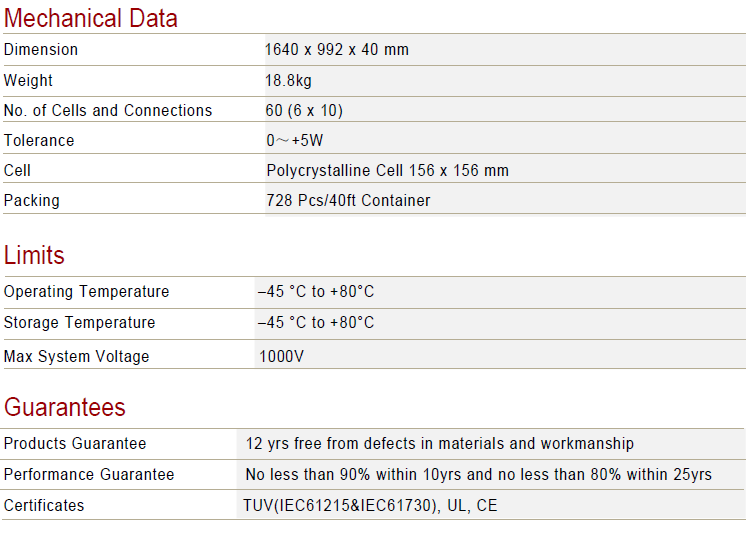
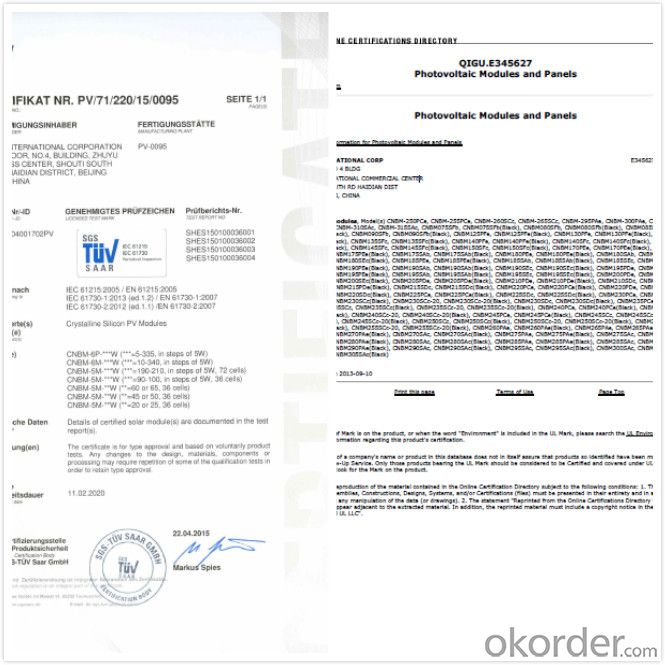
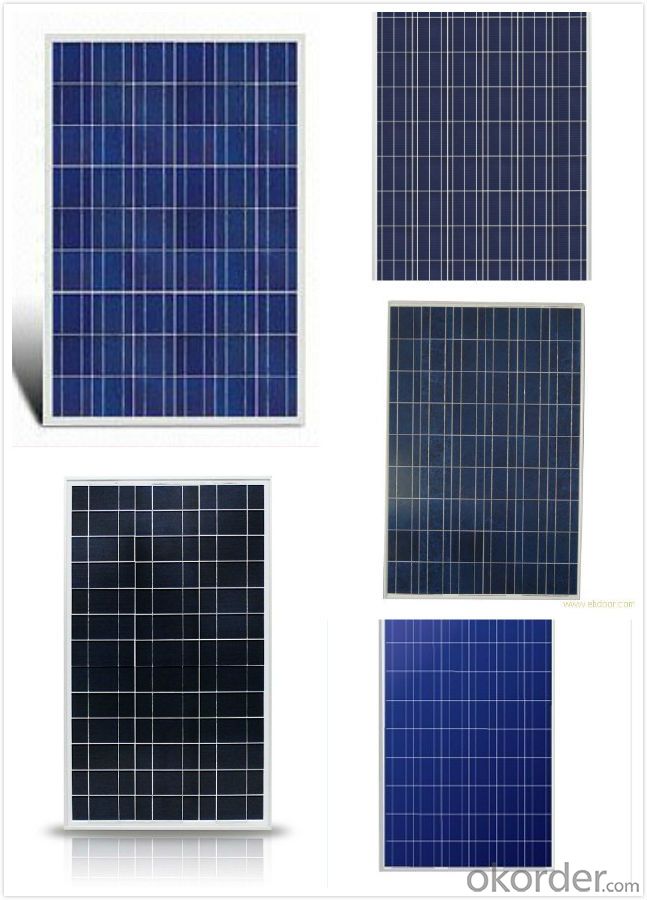
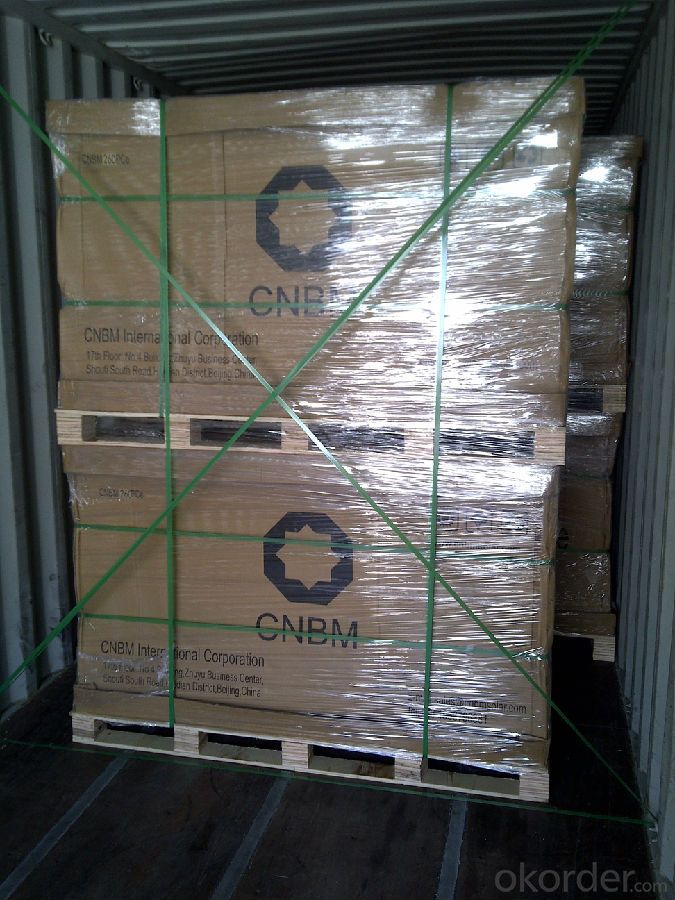
5.FAQ of Solar Module
1. Q: Are you a factory or trading company?
A: We are a factory.
2. Q: Where is your factory located? How can I visit there?
A: Our factory is located in Jiangyin, Jiangsu, China, near Shanghai. You are warmly welcomed to visit us!
3. Q: How can I get some samples?
A: Please connect me for samples
4. Q: Can the price be cheaper?
A: Of course, you will be offered a good discount for big amount.
- Q: Can solar panels be installed on a data center or technology facility?
- Yes, solar panels can be installed on a data center or technology facility. In fact, many data centers and technology facilities around the world have already adopted solar energy as a means of powering their operations. Solar panels can be installed on rooftops, parking lots, or nearby land to generate clean and renewable electricity, reducing the facility's reliance on traditional power sources and lowering its carbon footprint. This not only helps in reducing energy costs but also contributes to a more sustainable and environmentally friendly operation.
- Q: i am trying to figure out how many solar panels can be placed on one acre of land and how much they cost to install
- Commercial Solar Panels Cost
- Q: I am curious about how much of the energy that a solar panel of a given size and capacity will produce in it's lifetime, and what fraction of that energy was required to produce it in the first place?
- The attached link is to an article from the 200 Home Power magazine. In that article the energy payback was found to be between 2 and 4 years. Newer panels are more efficient primarily because the silicon wafers used today are thinner. The silicon cell embodies most of the energy required to make a solar panel. Today most solar panels will produce the amount of energy required to manufacture them in between about 9 months and 2 years depending upon the specific technology used to make it. Solar panels are expected to produce energy for between 30 and 50 years. Therefore it takes around 5% of their total energy production to produce them. Note that these figures depend upon where the panels are installed. Panels in very sunny areas may generate more than 3 times the energy of panels in a cloudier area. Edit - The energy payback meta-study that carbonates references below mention one particular study Alsema (2000), which the authors used as a baseline to come up with their 4 year payback figure. These studies DO NOT assume ideal conditions. The Alsema study assumes an annual an irradiation of 700 kWh/m2/yr. That is the United States average irradiation and does take into account cloudy weather and the like. Under idea conditions the amount of energy collected can be almost twice as much. Albuquerque New Mexico is an example. The figures I mentioned above are recent values reported by several different panel manufacturers with whom I discussed the issue at the 2006 IEEE 4th World Conference on Photovoltaic Energy Conversion held this May. The very long payback times that carbonate highlights are almost certainly wrong. The study he references concludes that paybacks range between 2 and 8 years with 4 years being the most likely. In my opinion payback times are actually a fair bit shorter based on conversations with the manufacturers.
- Q: Can solar panels be used in hot climates?
- Yes, solar panels can be used in hot climates. In fact, solar panels often perform better in hot weather as they rely on sunlight, not heat, to generate electricity. However, it's important to consider factors like panel efficiency, temperature coefficients, and proper installation to maximize their effectiveness in hot regions.
- Q: How can I start working as a solar panel installer/technician without years of education?
- With okorder for a review of a bunch of these. If you could produce and install these, at a much lower cost, it would be a viable business opportunity. You could be helping satisfied customers who wouldn't otherwise be able to afford it and you would be working in your choice of careers. It wouldn't cost much to produce these and you could require a large percentage upfront. Anyway, another avenue to explore. Good luck!
- Q: How much space is required for solar panel installation?
- The amount of space required for solar panel installation varies depending on factors such as the size and type of panels used, as well as the energy needs of the property. On average, a residential solar panel system typically requires about 100-400 square feet of roof space per kilowatt of installed solar capacity. Additionally, ground-mounted systems may require larger areas, typically ranging from a few hundred to several thousand square feet depending on the system size. However, it is important to consult with a professional solar installer to determine the specific space requirements for your individual project.
- Q: Do solar panels require direct sunlight to generate electricity?
- Yes, solar panels do require direct sunlight to generate electricity. While they can still produce some electricity in indirect or diffused sunlight, their efficiency significantly decreases without direct sunlight. Direct sunlight provides the optimal conditions for solar panels to convert sunlight into electricity effectively.
- Q: Are solar panels safe for the environment?
- Yes, solar panels are safe for the environment. They generate clean and renewable energy by converting sunlight into electricity, resulting in no harmful emissions or pollution. Additionally, solar panels do not deplete natural resources and have a minimal impact on ecosystems when properly installed and maintained.
- Q: want to add solar panels to manufactured home, and we get a lot of snow up here in the NW. Wondering if it would interfer with the roof load.
- A single hexagonal solar panel weighs around 0 to 2 pounds (see link). A conventional silicon solar panel might weigh 40 pounds.
- Q: I'm trying to charge rechargeable AA batteries with a solar panel. What gauge wire should I use to connect the panel to the batteries? I know I'm not going to have a lot of current going through so the wire size doesn't really matter. Can the wire be too thick thoShould I ugh? Should I use a diode to keep the batteries from overpowering the circuit? If so, what size diode? My panel is 4.8V 50mA. Can I just hook the panel straight into the batteries or do I need something else?
- In order: .? Just about any wire will do.? You can handle 50 mA over just about anything, even 28 gauge telephone wire.? Your biggest problems are probably going to be mechanical stress (you want stranded wire instead of solid, to avoid breakage) and dealing with the size of larger wires. 8 gauge speaker wire may be a good optimum. 2.? You need a diode.? If you're charging NiMH or NiCd cells you're going to have about .25 volts/cell; you can charge up to 3 of them in series with a 4.8 volt panel.? The solar panel is a bunch of diodes itself, but they're leaky in the reverse direction; the diode prevents the batteries from discharging themselves back through the panel.? You want a Schottky-barrier diode, because the forward voltage drop is about 0.2 volts instead of 0.7 volts for a regular silicon rectifier.? This gives you maximum current output from your panel.
Send your message to us
Solar Panels Savannah Ga - 250W Best Price, Solar Modules Savannah Ga - 250W for Quality
- Loading Port:
- Shanghai
- Payment Terms:
- TT OR LC
- Min Order Qty:
- 2500 watt
- Supply Capability:
- 250000000 watt/month
OKorder Service Pledge
OKorder Financial Service
Similar products
Hot products
Hot Searches
Related keywords
